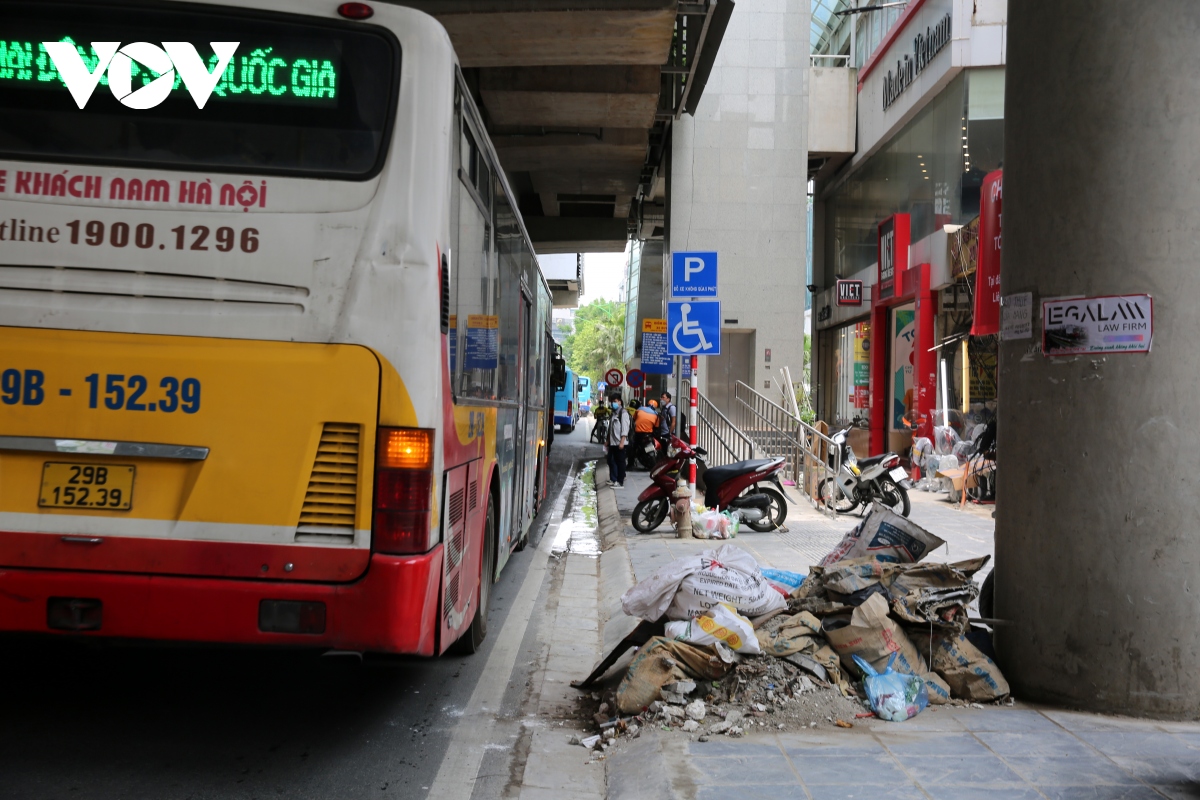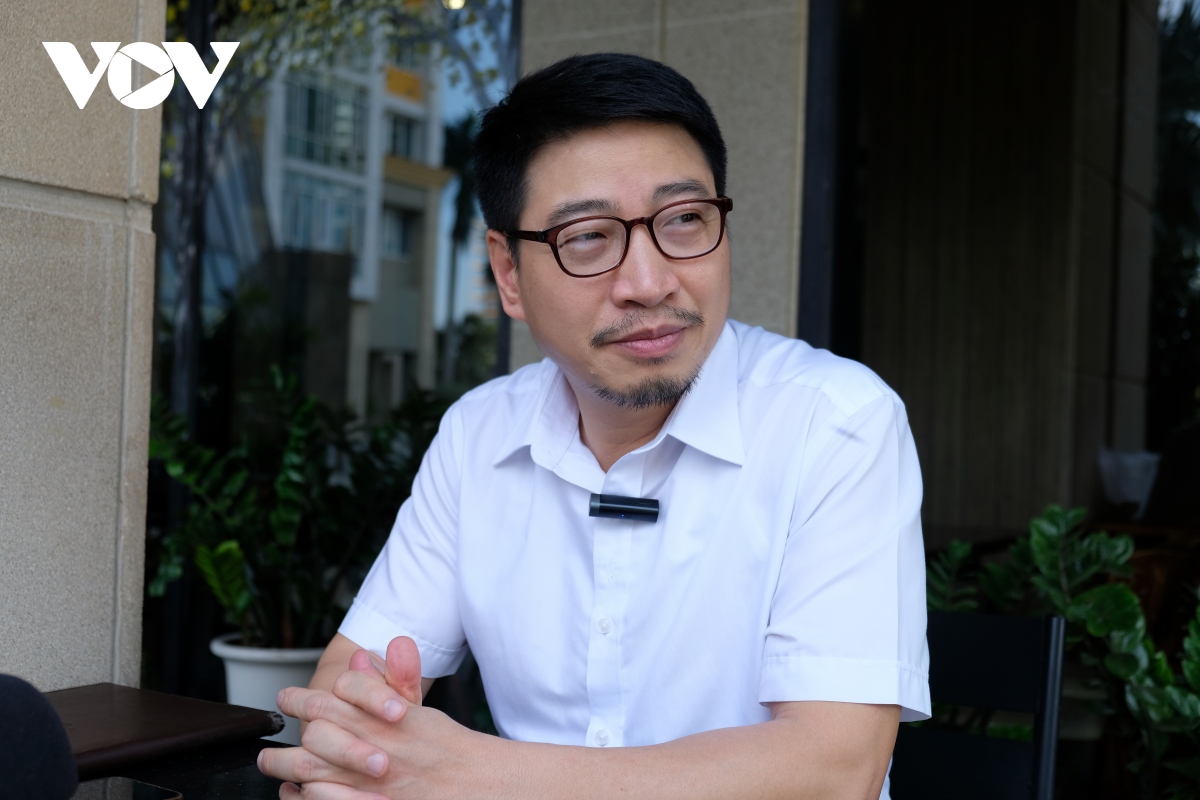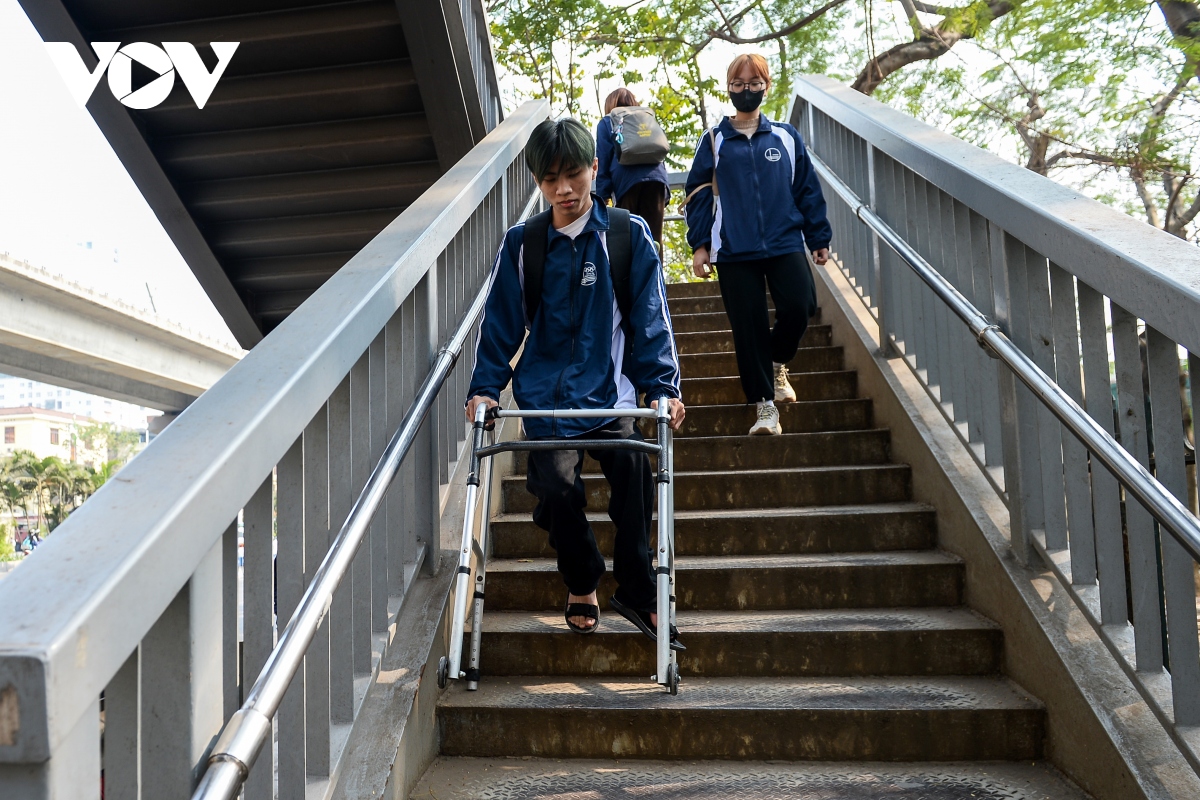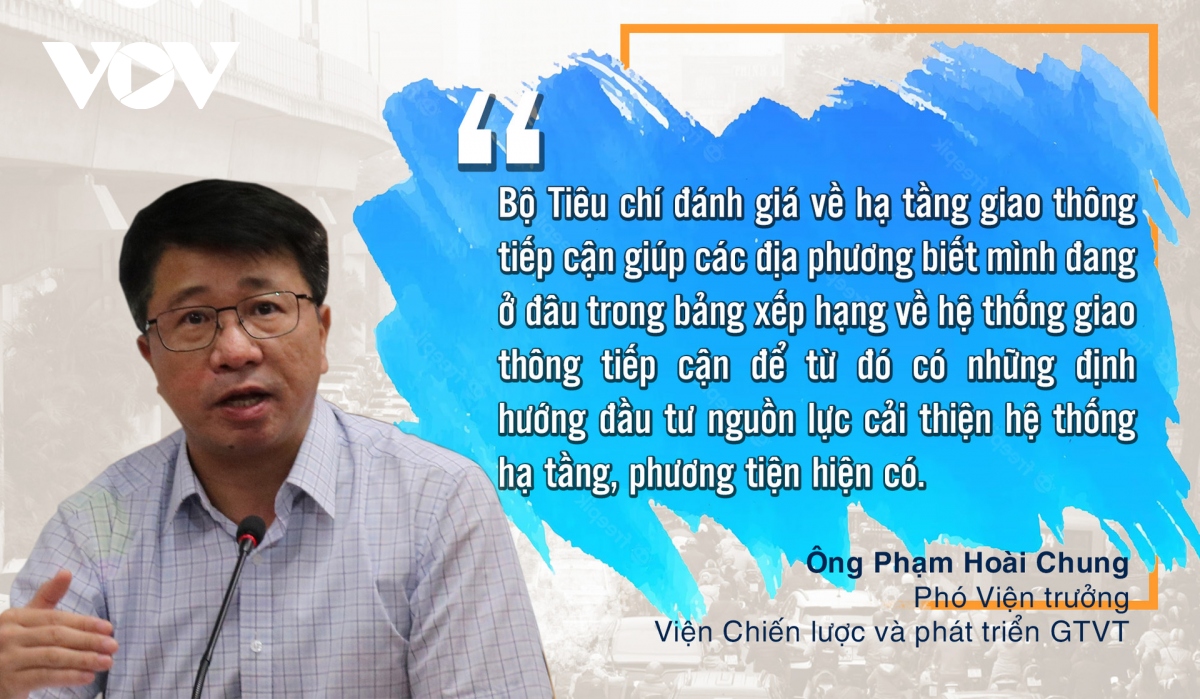Easing access to public transport services for people with disabilities
VOV.VN - User-friendly transport infrastructure represents an essential prerequisite for people with disabilities to integrate into the community, go to school, and make a living. Improving traffic infrastructure in a way to meet their needs opens up opportunities for them to affirm and increase their own value in society.

However, inadequacies in traffic infrastructure and gaps in policy implementation make it difficult for a large number of people living with disabilities to fully integrate into the community, find livelihood opportunities, and affirm their own values.
“Visually impaired people like us don't ask for much, except that the bus map and bus software need to be updated regularly, and bus staff members need to be friendlier. We think that can help,” says Luong Tuan Cuong, a student at Hanoi-based University of Social Sciences.
In order to improve traffic infrastructure for people with disabilities, Dr. Tran Huu Minh, chief of the Office of the National Traffic Safety Committee, says it is necessary to change the mindset of those who take part in the management, planning, and design process towards respecting the equal access rights of people with disabilities.
“Local authorities and investors in traffic and construction works need to seriously meet regulations and standards regarding access traffic for people with disabilities,” says Dr. Minh.
Dr. Minh reveals that the National Traffic Safety Committee is co-ordinating with relevant ministries and agencies to examine the possibility of incorporating traffic safety related issues into planning and pedestrian zones in support of wheelchair users’ access to traffic services.

Assoc. Prof. & Dr. Vu Anh Tuan, director of the Vietnam – Germany Transportation Research Center under Vietnam – Germany University, states that one of the workable solutions is to fully grasp the needs of people suffering from disabilities. In order to do so, he suggests conducting a survey on the number of people with disabilities in cities and rural areas to identify their daily travel needs, as well as the current advantages and disadvantages of current transport infrastructure services.
“Based on the results of the survey, policymakers will formulate overall strategies and priority solutions, especially infrastructure solutions, and incorporate them into regulations, feasibility studies and pre-feasibility studies," emphasises Dr. Tuan.

According to Dinh Dang Hai, project officer of Healthbridge Foundation of Canada in Vietnam, both planners and designers must fully comply with conformation in order to ensure transportation infrastructure works are highly practical. Road users, including people with disabilities, should therefore be encouraged to engage in various stages from planning and design to construction, while the efficiency of the supervisory work for construction investment management should also be enhanced.
Sharing practical experience acquired in localities, Nguyen Van Cu, deputy director of the Center for Disability Research and Capacity Development (DRD), emphasises the role that supervision plays as part of the process.
“If the locality can develop a monitoring mechanism with the engagement of the Association of People with Disabilities, from the very beginning, the efficiency of construction works for people with disabilities will be enhanced. In addition, it is also necessary to strengthen punitive measures against those that fail to comply with regulations,” stresses Cu.
Examining the present traffic infrastructure for people with disabilities, architect Nguyen Tieu Quoc Dat, deputy director and a founder of Think Playgrounds, notes that it is necessary to have a serious attitude and enforce quality standards to assist people with disabilities, along with putting forward initiatives led by grassroots-level communities and organisations.
The Prime Minister has assigned the Ministry of Transport to study and lay down a set of evaluation criteria for the access transport system. Through the criteria, localities will know their position in the ranking of access traffic services, grasp and address inadequacies that exist in policy, infrastructure, or means of transport in order to outline development orientations and devise investment plans to close any loopholes. The Transport Development and Strategy Institute has duly been assigned by the Ministry of Transport to develop this set of criteria.

Pham Hoai Chung, deputy director of the Transport Development and Strategy Institute under the Ministry of Transport, suggests that the Ministry of Transport could soon issue a set of evaluation criteria for accessible transport infrastructure, thereby making it easier for localities to take proactive measures and orientate investments in traffic infrastructure and means. This set of criteria is also part of the Plan of Action on construction for the 2021 - 2025 period of the Ministry of Transport.
“We do hope that the set of criteria will also help local communities reinforce their accessible transport system towards a barrier-free public transport system,” says Chung.
Some experts have suggested promoting the application of information, data and digital technology sharing, such as digital maps, audio maps, and phone applications to help wheelchair users easily gain access to relevant information about legal policies, as well as information about bus stations and bus routes.
Vietnam always places great importance on promoting and protecting the rights and interests of people with disabilities on the basis of equality and non-discrimination. The recent past has shown that the country has made enormous efforts to promote the rights and integration of the disabled into community.
However, in order to achieve the goal of translating policies into real life, it remains necessary to ensure the synchronisation and consistency of policies so that they can be effectively implemented to bring about benefits for the people, especially disadvantaged groups such as people with disabilities.
